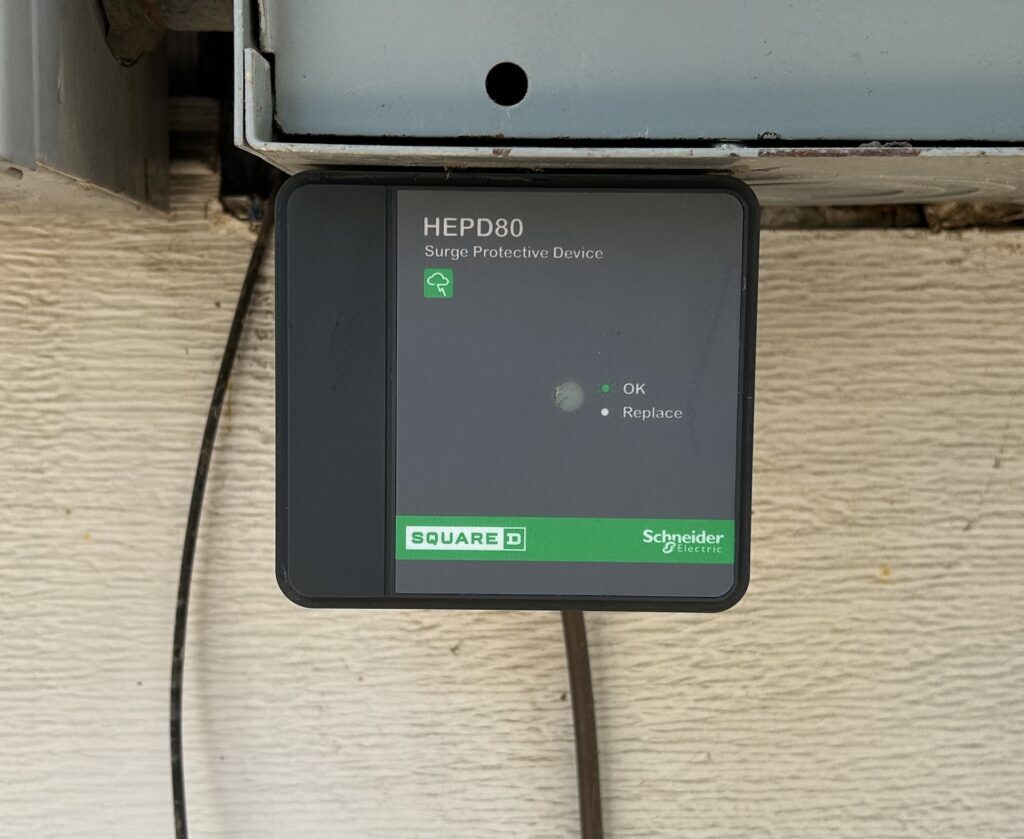In our technologically advanced world, our homes are filled with a multitude of electronic devices, from smart appliances to sensitive entertainment systems. While these devices enhance our daily lives, they are also susceptible to the invisible threat of power surges. Power surges can occur due to lightning strikes, utility grid fluctuations, or even internal issues within the home’s electrical system. To protect our valuable electronics, whole home surge protectors play a crucial role. In this article, we will delve into the intricacies of how these protectors work to keep our electronic devices safe.
Understanding power surges
A power surge is a sudden and temporary increase in voltage that can wreak havoc on electronic devices. These surges can be caused by various factors, with lightning strikes being a common and powerful source. Additionally, power surges may result from internal issues such as faulty wiring, malfunctioning appliances, or fluctuations in the utility grid.
When a power surge occurs, the excess voltage can overwhelm the delicate electronic components within our devices, leading to irreversible damage. To mitigate this risk, whole home surge protectors serve as a first line of defense by diverting excessive voltage away from the electronic devices connected to the home’s electrical system.
The basics of whole home surge protectors
Whole home surge protectors, also known as panel-mounted or service entrance surge protectors, are devices designed to intercept and redirect excess voltage before it reaches the electrical circuits within a home. These protectors are typically installed at the main electrical panel, providing comprehensive protection for all devices connected to the home’s electrical system.
Components of whole home surge protectors
Metal oxide varistors (MOVs)
The core component of a whole home surge protector is the Metal Oxide Varistor. MOVs are semiconductors with a variable resistance that decreases as voltage increases. When the voltage surpasses a certain threshold, the MOVs become conductive, diverting the excess voltage away from the protected circuits.
Thermal fuses
To prevent overheating and fire hazards, surge protectors incorporate thermal fuses. These fuses act as a fail-safe mechanism, disconnecting the surge protector from the electrical system if it becomes overloaded or if the MOVs fail.
How whole home surge protectors operate
Voltage diversion
When a power surge occurs, the whole home surge protector detects the excess voltage. The MOVs, connected in parallel to the electrical circuits, respond by providing a low-impedance path for the excess voltage to follow.
Voltage clamping
As the voltage increases, the MOVs conduct more current, effectively clamping the voltage to a safe level. This ensures that the excess voltage is shunted away from the connected devices, preventing damage.
Fast response time
Whole home surge protectors are designed to respond rapidly to voltage spikes. The quick reaction time is crucial in diverting the surge before it can reach and damage sensitive electronics. High-quality surge protectors can react within nanoseconds, providing near-instantaneous protection.
Benefits of whole home surge protectors
Comprehensive protection
By being installed at the main electrical panel, whole home surge protectors safeguard all devices connected to the home’s electrical system. This includes not only electronic gadgets but also major appliances, HVAC systems, and other critical equipment.
Longevity of devices
Protecting electronic devices from power surges extends their lifespan. Frequent exposure to surges can degrade the internal components of devices over time, leading to premature failure. Surge protectors help prevent this by diverting the excess voltage and maintaining a stable electrical environment.
Insurance for home electronics
Given the substantial investment in home electronics, a whole home surge protector serves as an insurance policy. It provides peace of mind, knowing that your devices are shielded from the unpredictable nature of power surges.
Installation
While whole home surge protectors are an effective means of safeguarding your home electronics, proper installation and maintenance are essential. It’s recommended to hire a licensed electrician for the installation to ensure the surge protector is correctly integrated into the electrical system.
Lifespan of whole home surge protectors
While whole home surge protectors are robust devices designed to withstand numerous power surges, it’s essential to understand that they have a finite lifespan. The longevity of a surge protector is influenced by factors such as the frequency and intensity of power surges, the quality of the surge protector itself, and the overall electrical environment of the home.
Varistor wear and tear
The Metal Oxide Varistors (MOVs), which are the primary components responsible for diverting excess voltage, experience wear and tear with each surge event. Over time, the repeated stress on the MOVs can diminish their effectiveness. As a result, surge protectors are typically rated for a certain number of joules – a measure of energy absorption – which gives an indication of their capacity to handle surges before performance degradation.
Surge protector quality
The quality of the surge protector plays a crucial role in determining its lifespan. Higher-quality surge protectors often come with better internal components, superior engineering, and enhanced durability. Investing in a reputable surge protector can extend its lifespan and provide more reliable protection for your home electronics.
Frequency of power surges
Homes located in areas prone to frequent lightning storms or with unstable power grids may experience more frequent power surges. In such cases, the surge protector may be subjected to a higher number of surge events, potentially shortening its lifespan. In 2022, Texas had the highest lightning count with over 27 million bolts recorded. Southeast and Central Texas are the areas most prone to lighting in Texas, making homes in Austin and nearby areas more susceptible to power surges. Regular monitoring and replacement of surge protectors in these environments are advisable.
Environmental factors
The physical environment in which the surge protector is installed can impact its lifespan. Surge protectors should be kept in a cool, dry place to prevent overheating. Additionally, exposure to extreme temperatures, humidity, or contaminants can degrade the internal components and reduce the overall effectiveness of the surge protector.
Manufacturer recommendations
Manufacturers typically provide guidelines regarding the expected lifespan of their surge protectors. It’s essential to follow these recommendations and replace the surge protector accordingly. Some manufacturers also include warranty periods, ensuring that the surge protector is replaced within a specified timeframe if it fails.
Maintenance and replacement considerations
Regular inspections
Periodic inspections of the surge protector, including visual checks for any physical damage or indicator lights showing faults, are advisable. If there are signs of wear or if the surge protector has taken a significant hit, it may be time to replace it.
Upgrading technology
As technology advances, newer surge protectors may offer improved features and better surge-handling capabilities. Considering an upgrade to the latest models can ensure that your home remains equipped with state-of-the-art protection.
Professional assessment
If you experience a major electrical event, such as a lightning strike or a significant power surge, it’s advisable to have a professional electrician in Austin assess the surge protector’s condition. They can provide insights into whether the surge protector has performed its role effectively or if it requires replacement.
Protect your home in Austin with whole home surge protectors
In an era where electronic devices are integral to our daily lives, protecting them from the silent threat of power surges is paramount. Whole home surge protectors stand as guardians, intercepting and diverting excess voltage before it can wreak havoc on our valuable electronics. Understanding the mechanics of these protectors empowers homeowners to make informed decisions, ensuring the longevity and reliability of their electronic investments.
As technology continues to advance, the role of whole home surge protectors becomes increasingly crucial in maintaining a secure and resilient home electrical system. Terrapin Electric is your trusted source for keeping your home’s electrical components working efficiently. If you’re interested in installing surge protectors for your home in Austin or nearby locations, contact us today to get started.


